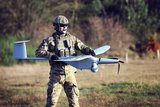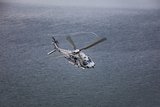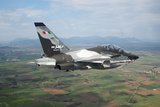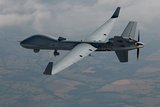Italy set to be first recipient of Leonardo’s MAIR system
Multiple Aperture InfraRed is a missile warning system based on multiple InfraRed sensors, able to cover the full angular volume around the aircraft. (Photo: Leonardo)
Leonardo’s new Multi Aperture Infrared (MAIR) threat warning system has gone into series production.
Manufacturing has begun on an initial batch of units for installation on helicopters including the Italian Army’s Light Utility Helicopter (LUH) based on Leonardo’s AW169M.
As a distributed aperture warning system, MAIR fuses data between four and six IR cameras to detect and track incoming missiles and hostile gunfire threats using their heat signatures.
Customers can also choose to purchase an additional image processor module that can deliver day and night imaging and full mission data recording capability to boost situational awareness and support navigation and landing.
IR threat warning systems offer many advantages over legacy UV systems, improving response time and tracking accuracy.
MAIR can be installed as a stand-alone threat warning system or can be integrated with countermeasures, such as a Directed IR CounterMeasure, as part of a wider aircraft protection system.
Leonardo revealed its MAIR system at the 2019 Paris Air Show and production was expected to begin in 2020, the COVID-19 pandemic may have caused delays to this schedule.
According to Shephard Defence Insight, the AW169M is designed to perform a range of light utility and armed attack roles, as well as observation and training missions.
Related Equipment in Defence Insight
More from Air Warfare
-
![Portugal signals interest in establishing A-29N final assembly line]()
Portugal signals interest in establishing A-29N final assembly line
As the launch customer for the NATO-configured variant, Portugal also took delivery of the first five A-29N aircraft from its order for 12, placed in 2024.
-
![Leonardo signs contract on Austria’s M-346 aircraft order]()
Leonardo signs contract on Austria’s M-346 aircraft order
The first of the 12 M-346 aircraft are expected to be delivered to the Austrian Air Force by 2028, according to the company.
-
![2025 UAV market review: $7.8 billion in new contracts signed as US leads spending]()
2025 UAV market review: $7.8 billion in new contracts signed as US leads spending
Qatar and Indonesia followed the US’s high spending on new uncrewed aerial vehicle contracts across 2025, while MALE and micro drones and loitering munitions were particularly popular subcategories this year.





















